About the Artist
Thunder Jackson is a genre-defying pop artist blending nostalgic songwriting with high-energy production and left-field aesthetics. With roots in Oklahoma and a flair for the cinematic, Thunder’s music lives somewhere between the analog intimacy of indie rock and the digital sheen of modern pop — always unpredictable, but consistently magnetic.
About the Client
For this campaign, Music Tomorrow was brought on board by VERO Music, the independent label arm of VERO, in collaboration with YMU Group — a global talent management company representing some of the most forward-thinking artists across music and entertainment. Music Tomorrow’s role was to support the rollout of Thunder Jackson’s new album Hello Stranger through a data-first, algorithmically optimized strategy — aligning creative direction with deep audience and platform insights.
What started as a more traditional rollout quickly evolved into a cutting-edge, insight-led algorithmic optimization campaign — resulting in a 2.05x uplift in algorithmic streams for the artist and setting the foundation for a repeatable, audience-first approach to sustainable, long-term streaming growth.
Strategy for the Algorithmic Era
The release strategy for Hello Stranger was already rooted in strong creative direction and a thoughtful rollout plan — but when it came to algorithmic optimization, the team, like most independent label operations out there, was left in the dark. There wasn’t yet a clear view of how Spotify’s recommender system perceived the music — or a workflow to monitor and influence those signals.
That’s where we came in: not just with a tool or a tactic, but with a new approach to streaming optimization — and a platform designed to make that approach actionable. Sourcing the team with a view of where they stood in the recommendation landscape, we were able to identify the untapped streaming niches that fit the upcoming material, and develop an action plan for reaching and engaging these audiences.
An Artist Between Audiences
When we first reviewed Thunder Jackson’s algorithmic profile on Music Tomorrow back in April 2024, what we found was a split algorithmic audience footprint.
On one hand, 2020’s track Guilty Party had developed a strong following in the DACH region (Germany, Austria, Switzerland), engaging chill-leaning, acoustic indie pop audiences. On the other, heavy hitters like Love Sick Doctor and Colors connected with more international alternative R&B audiences, particularly in the US and UK.
However, none of the top audience segments quite reflected the direction of the new material. The upcoming album leaned into brighter, more expressive territory: indie pop with rock roots, blending groovy productions and a direct, passionate approach to songwriting. The material had evolved — so the streaming strategy had to follow.
Step 1: Mapping the Material
Before anything else, we dove into the music — not just creatively, but also algorithmically. We ran audio analysis across the singles, reviewing the tracks’ tempo, harmony, energy dynamics, and lyrics to understand how they might land in Spotify’s recommendation landscape.
- The Fever & The Dream came in as a high-energy, feel-good indie pop track.
- Steady Freddy leaned more groove-heavy, landing somewhere between R&B, pop, and rock.
- Spoonfed Desire added an emotional edge — classified as a sentimental pop track with subtle R&B textures.
- Hello Stranger, the title track on the album, sat confidently in the middle: melodically driven and introspective.
The track genre, mood, and energy dimensions extracted at this stage did more than just reformulate the creative positioning — it all tied into the next step: identifying high-potential streaming audience segments for the album release.
Step 2: Rethinking the Audience Targets
With the new sonic direction in mind, we turned to the algorithmic profile. Our initial analysis surfaced three key audience segments in Thunder Jackson’s algorithmic vicinity as of April 2024:
- DACH Acoustic Indie: Mostly Germany-based segment, anchored in chill, guitar-led pop sounds.
- Alt-R&B / Indie Soul: A more international segment, focused around a particular brand of indie pop, integrating elements of R&B and house.
- POV: Indie: A fast-growing, US/UK-heavy space defined by energetic, emotionally expressive indie pop rooted in personal storytelling.
We focused on the third segment — not because it had the biggest footprint, but because it felt like the best fit for where the artist was headed creatively. To further sharpen that target, we ran a follow-up multi-artist study: taking a number of key segment artists as a seed, we retrieved their individual profiles and mapped out a few key audiences where their profiles converged.
This process allowed us to expand on the original segment target, identifying adjacent listener communities to allow for more efficient targeting and to reflect the variety of the upcoming material.
This surfaced two actionable target segments:
- Indie Pop Crossover: A mainstream-friendly audience captured by upbeat, guitar-driven, emotionally accessible artists like Still Woozy, COIN & Dominic Fike.
- Eclectic Alternative R&B: A more niche crowd enjoying genre-fluid, groove-heavy acts at the intersection of R&B and experimental pop — with key references such as Duckwrth, Emotional Oranges & Dijon.
Each of these target segments was translated into platform-specific audience definitions that informed ad set composition across Meta and YouTube — grounding digital marketing operations in platform insights and setting the campaign up for maximum engagement.
Step 3: Execution, Iteration & Feedback Loops
Each single launched with its own dedicated digital ad campaign, each A/B tested and tuned in real time. The results started coming in fast: the first thing the team noticed was a sharp increase in click-through rates. This was a clear sign that the campaign was finding the right audience — but we didn’t stop there.
With each following single release, we revisited the artist’s algorithmic positioning to understand how the new singles landed in the Spotify ecosystem — and what audiences were most engaged with the newly released material.
These continuous iterations allowed the team to hone in the targeting materials (while still keeping the release audience targets in mind to ensure consistency), and by the end of the release cycle, some of the Music Tomorrow-sourced campaigns outperformed previous ad baselines by a factor of 10 on CPC and other key ad performance metrics.
But it wasn’t just about ads optimization — aligning digital marketing with the help of Music Tomorrow audience segments ensured that the rollout built a consistent and convincing story for the recommender, which had a massive impact on the artist’s algorithmic exposure on Spotify.
Campaign Results
By March 2025, the artist’s algorithmic reach — an internal MT metric estimating the number of unique Spotify users exposed to their music via algorithmic recommendations — had grown from the pre-release level of about 200K to over 2.5M.

With these 2.5 million listeners spread across multiple audience segments, we won’t get into the full detail of attributing that growth. But, as a bit of an anecdote: one of the most influential third-party playlists for the top audience segment at the time of writing this case study was called “that alt/indie rock genre you can’t explain to anyone” — providing the best description to the new album’s algorithmic positioning.
Perhaps, in a few months from now, a new genre tag describing that space will get on Music Tomorrow’s radar — for now, Spotify hasn’t defined one.
But it wasn’t just the internal metrics that showed the profile growth. In about a year since the first single release, the monthly algorithmic stream volume for the artist has increased by over 2x, with the new album clearly driving that growth.
At the time of writing, the 28-day share of algorithmic streams for all four of the focus tracks is in the range from 60% up to a jaw-dropping 72%, allowing the album to maintain a clear upward trajectory more than half a year after the LP release.

Conclusion
Hello Stranger didn’t find algorithmic success by accident. It moved through Spotify’s recommendation ecosystem because the strategy was built around the music — and the system it lives in. From audio profiling to audience mapping, campaign execution to feedback loops, this rollout was designed with the recommender in mind.
And more than anything, the campaign’s success is thanks to that mindset shift.
The team didn’t just launch a few ads — they adopted an RSO workflow: rooting the strategy in deep (algorithmic) audience research, tracking key profile shifts in real time, responding to changes in audience exposure, and using every previous campaign to feed the next move.
And that loop still continues. We’re still tracking Thunder Jackson's profile on Music Tomorrow, still looking out for new audience segments and opportunities. Still building campaigns that work with the algorithm, not against it.















